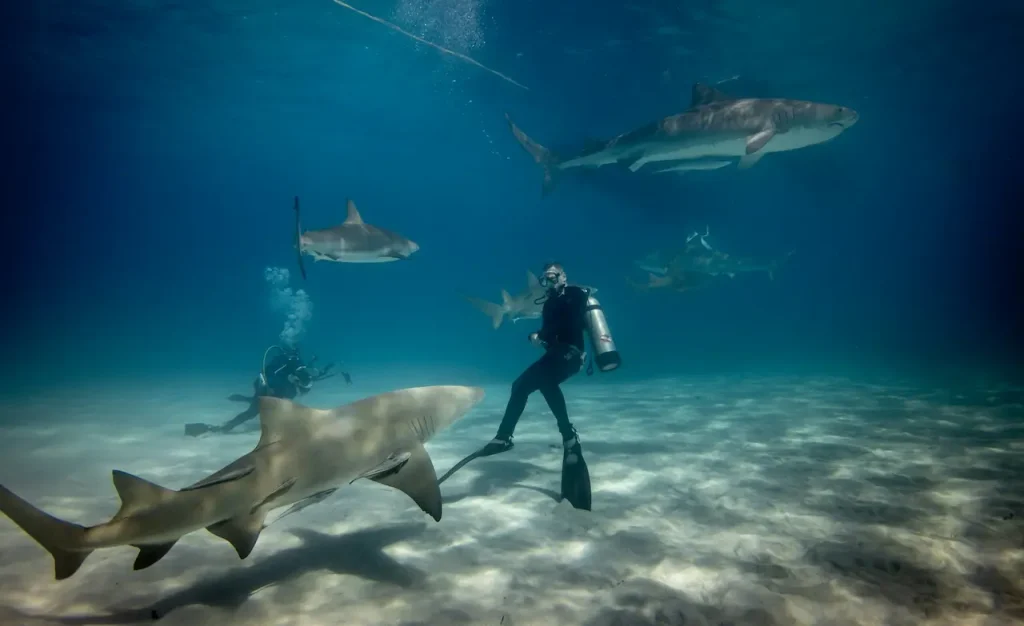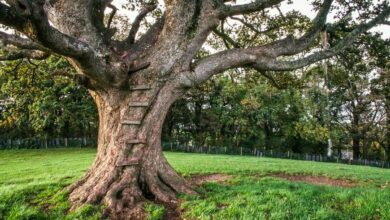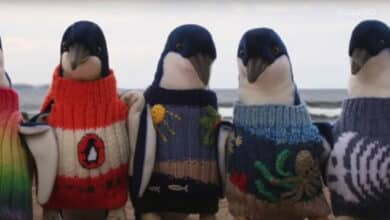1. Childhood Coastlines
Madison Stewart, a young Australian girl, found her first home on the Gold Coast of Australia, not on land but below the waves. She and her family were raised on a sailboat from toddlerhood, and they lived in a world cradled within the tides of the ocean. By the time she was two, the ocean had become familiar. She became a certified open water diver by the age of twelve. The coral, endless horizons and curious residents like sharks were no longer a curiosity. The Aussie Shark Girl
Growing up, she developed a deep love of the ocean, its vastness, life and, most importantly, sharks. She says that “sharks cause fear in many people”. Madi, on the other hand, sees beauty and importance in a species that is a keystone. Under a tropical sun, the water was Madi’s sanctuary, and sharks were her silent, misunderstood friends.

2. Vanishing Giants: A Wake-Up Call
Madison, at the age of 14, went back to the reef near the Great Barrier Reef. She was shocked by what she found: all the sharks had disappeared. The vibrant, toothy groups were gone. Moments of awe quickly turned to alarm. She recorded it on her tape-camera, and sent a letter, along with her footage, to then-environment Minister Peter Garrett, begging for an intervention. It didn’t help; the fishery has been renewed
The turning point was this disappearance. She realised her love of sharks needed to be translated into action. She chose to homeschool instead of attend traditional school, allowing her the freedom to study, film, and campaign.
3. Film as a voice, conservation as a story: The Aussie Shark Girl
Madison quickly learned that public interest in scientific publications is rare. She used filmmaking to be her voice and bridge between the ocean and shore. At the age of 18, Shark Girl was born. Later came Blue (2017) and Sharkwater Extinction (2018)–documentaries which she used to untangle fear and foster connection.
She remembers being “spellbound” by a great, gentle hammerhead in the Bahamas. The giant was so powerful that his arrival stunned two nearby tiger sharks. She was filled with a sense of expansive kinship, not fear. She uses scenes like this to tell a story: “a little bit of radical music, and a shot of a big shark’s eyes looking up at you… That’s when it happens.”
She invited those who were afraid of sharks, through film, to let go of that fear and embrace curiosity – and compassion.
4. Project Hiu: From villain to partner
She was led to Indonesia, and specifically to Lombok. This is home to the largest shark fisheries in the world. She was confronted with realities that were far from the reef diving she had been used to: men who hunted these creatures as a means of survival and for tradition. She chose to listen, rather than demonising the fishermen. She admits that she was “naive”, but in the fishermen she found humanity and a shared struggle. She built trust through vulnerability and humility.
She founded Project Hiu in 2018, which means “shark” (in Bahasa Indonesia) and offers fishermen alternative livelihoods through ecotourism. Her idea? Replacing shark fishing with possibility, not opposition. Bring in tourists who will pay to see sharks alive, instead of dead. Odi, a fisherman whom she credits with her return the following month, was cautious in his invitation. Madison recounts the rest of her story.
Traditional shark boats glide in the azure waters of Lombok, now filled with tourists. The sharks are alive and breathing, thanks to the guides who guide snorkelling trips. This model challenges us to think: perhaps sharks and those who fish for them need empathy instead of ethical exclusion.
5. Awards, Recognition and a Youthful Roaring
Madison’s story resonated beyond the ocean. She was awarded the Australian Geographic Society Young Conservationist Award in 2017, accepted by shark legend Valerie Taylor. She was a young icon of grassroots conservation and urged others to “contact local shops, write to the government, or push back against media which demonises Sharks”.
She was also awarded the Peter Benchley Youth Conservation Award for her work as a storyteller and an activist.
6. Ocean Ecosystems: Human Realities and Global Ripples
These efforts cannot be separated from a broader environmental story. Sharks are top predators in the oceans. They regulate food chains. Over 100 million sharks are killed every year by fishing, bycatch and finning–leading many species to the brink of extinction.
Madison’s simple, yet radical work is about changing Mentality – providing alternative narratives to both how we view sharks and marginalised communities as partners in conservation.

7. The Story of Hope: Human and Marine
You might see the glow of the sunrise on Lombok’s coastlines, as well as fishermen preparing boats that were once used for hunting but are now being used for healing. You would hear laughter and not fear. There’s still a sting in the back of your throat – from lost shark populations and ecological apology. There are also stirrings, a sense of belonging and a connection between cultures, species, and visions.
Madison’s journey – from a young diver who was influenced by tides and fins to a filmmaker who confronted fisheries, to a Founder building bridges between tourism and a Global role model – reminds us that conservation, as much as courage, is geography. It’s not just about ideologies and species, but also the places where we grow up, the stories that we tell, and our hearts.
Reflections on Moving Forward
- Place shapes Passion: Coral reefs, sailboat childhoods, Gold Coast waves – these landscapes were Madison’s cradle as well as her crucible.
- The language of fear is, and film is the translator. Her cameras were emissaries for humans and sharks.
- Empathy is a powerful tool that can transform industries, as seen in Project Hiu. This project, which is rooted in human interaction, rather than confrontation, has shown how empathy can transform industries.
- Youth Voices Matter — Because meaningful change often begins in places that we barely notice, such as local reefs and small fisheries.
- Ecosystems are closely linked to economies, and sustainability requires us to look beyond binary categories: tourist or activist; shark-fisher or fisherman.
What’s Next?
There are places where empathy can grow in each of our “backyards”: quiet species, forgotten trades, and ingrained myths. It’s unlikely that we can turn shark hunters into eco guides (though imagine what would happen if this were possible). We can still be thoughtful consumers, storytellers and letter writers, as well as empathetic world explorers.
Madison’s story reminds us that one person, with curiosity, compassion, and courage, can create ripples of change in oceans and across communities.



